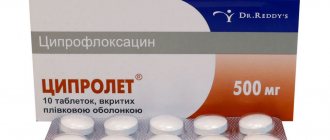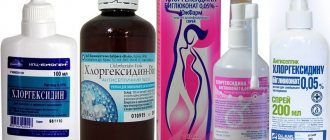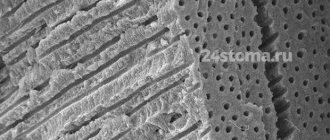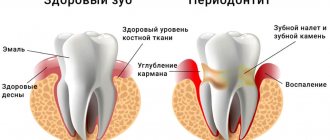Nimesulide
Undesirable side effects can be minimized by using the drug in the minimum effective dose with the minimum duration of use necessary to relieve pain.
There is evidence of very rare cases of serious reactions from the liver, including cases of death, associated with the use of nimesulide-containing drugs. If symptoms similar to signs of liver damage appear (anorexia, itching, yellowing of the skin, nausea, vomiting, abdominal pain, dark urine, increased activity of liver transaminases), you should immediately stop using the drug Nimesulide and consult a doctor. Repeated use of Nimesulide in such patients is contraindicated.
Reactions from the liver, in most cases of a reverse nature, have been reported with short-term use of the drug.
While using the drug Nimesulide, the patient should refrain from taking other analgesics, including NSAIDs (including selective COX-2 inhibitors).
The drug Nimesulide should be used with caution in patients with a history of gastrointestinal diseases (ulcerative colitis, Crohn's disease), since exacerbation of these diseases is possible.
The risk of gastrointestinal bleeding, peptic ulcer/perforation of the stomach or duodenum increases in patients with a history of gastrointestinal ulceration (ulcerative colitis, Crohn's disease), as well as in elderly patients, with an increase in the dose of NSAIDs, so treatment should begin with the lowest possible dose. In such patients, as well as in patients who require the simultaneous use of low doses of acetylsalicylic acid or other drugs that increase the risk of complications from the gastrointestinal tract, it is recommended to additionally prescribe gastroprotectors (misoprostol or proton pump blockers).
Patients with a history of gastrointestinal disease, especially older patients, should report new gastrointestinal symptoms (especially symptoms that may indicate possible gastrointestinal bleeding) to their physician.
Nimesulide should be administered with caution to patients taking drugs that increase the risk of ulceration or bleeding (oral corticosteroids, anticoagulants such as warfarin, selective serotonin reuptake inhibitors or antiplatelet agents such as acetylsalicylic acid).
If gastrointestinal bleeding or gastrointestinal ulceration occurs in patients taking Nimesulide, treatment with the drug must be stopped immediately.
Given reports of visual impairment in patients taking other NSAIDs, if any visual impairment occurs, use of Nimesulide should be immediately discontinued and an ophthalmological examination performed.
The drug may cause fluid retention, therefore, in patients with arterial hypertension, renal and/or heart failure, Nimesulide should be used with extreme caution. If the condition worsens, treatment with Nimesulide should be discontinued.
Clinical studies and epidemiological data suggest that NSAIDs, especially at high doses and with long-term use, may lead to a small risk of myocardial infarction or stroke. There is insufficient data to exclude the risk of such events when using nimesulide.
The drug may cause fluid retention in the body.
Patients with arterial hypertension, renal and/or heart failure, coronary heart disease, peripheral arterial disease and/or cerebrovascular diseases, with risk factors for the development of cardiovascular diseases (for example: hyperlipidemia, in smokers), Nimesulide should be used with caution. . If the condition worsens, treatment with Nimesulide should be discontinued.
If signs of a “cold” or acute respiratory viral infection occur while using the drug Nimesulide, the drug should be discontinued.
Nimesulide can change the properties of platelets, so caution must be exercised when using the drug in people with hemorrhagic diathesis, however, the drug does not replace the preventive effect of acetylsalicylic acid in cardiovascular diseases.
Elderly patients are especially susceptible to adverse reactions to NSAIDs, including the risk of life-threatening gastrointestinal bleeding and perforation, and decreased renal, hepatic, and cardiac function. When taking the drug Nimesulide for this category of patients, proper clinical monitoring is necessary.
There is evidence of rare cases of skin reactions (such as exfoliative dermatitis, Stevens-Johnson syndrome, toxic epidermal necrolysis) when taking NSAIDs, including nimesulide. At the first manifestations of a skin rash, damage to the mucous membranes or other signs of an allergic reaction, Nimesulide should be stopped immediately.
Nimesulide in the treatment of chronic joint diseases
Joint diseases of various locations are one of the most common reasons for visiting a doctor, along with arterial hypertension. Joint diseases are socially significant diseases.
First, these diseases affect a large part of the population. The most common joint disease is osteoarthritis (OA), especially in people over 65 years of age, when its prevalence reaches 97% of the population. Among chronic inflammatory diseases of the joints, the most common is rheumatoid arthritis (RA), a disease that almost obligately leads to disability in patients within 3–5 years from the onset of the disease.
Secondly, these diseases characterize the development of persistent pain, which can be associated with various causes. The most common cause of pain in joint pathology is the development of synovitis. However, in OA, the development of pain may be associated with other pathogenetic components of the disease. Normally, all joint structures have pain endings, with the exception of cartilage. But with OA, partial vascularization and innervation of the cartilage occurs. Thinning and damage to the cartilage reduces its shock-absorbing properties, and the load on the subchondral bone increases with the development of swelling and pain. In addition, cartilage fibrillation also induces pain and inflammation.
Data obtained from studying the effect of pain on the prognosis of OA indicate:
- About 20% of patients do not receive adequate treatment for chronic pain syndrome, so their pain level on a 10-cm visual analogue scale (VAS) is 5 cm or more [1].
- Chronic pain due to OA leads to a decrease in women's life expectancy by an average of 10–12 years.
- The life expectancy of elderly patients with OA depends to a greater extent on the intensity of pain than on the presence of concomitant potentially life-threatening diseases [2].
- The risk of OA progression is as much associated with pain as with radiographic changes.
Nonsteroidal anti-inflammatory drugs (NSAIDs) have analgesic, anti-inflammatory and antipyretic effects. Therefore, they are indispensable in the treatment of arthrological diseases. The rapid development of the analgesic effect determines the obligatory nature of their use in the treatment of joint pathology. The positive therapeutic effect of NSAIDs is associated with inhibition of COX-2. This enzyme, participating in the breakdown cascade of cell membranes damaged during inflammation and other lesions, is responsible for the release of pro-inflammatory prostaglandins and other inflammatory mediators not only in the joints, but also in other organs and tissues, primarily in the walls of blood vessels. Based on the above, it becomes clear that the use of selective COX-2 inhibitors has important clinical and social significance.
In clinical practice, selective COX-2 inhibitors have taken a strong place, although the full potential of their capabilities is still not used by practitioners. “Myths” often arise about their potential toxicity, primarily in relation to the cardiovascular system. Information on the hepatotoxicity of nimesulides has been published in the Western literature, based on isolated and poorly documented clinical cases. I would like to specifically discuss these aspects in this message, taking the drug “Nise” as an example.
The drug "Nise" is a selective inhibitor of COX-2, which has been proven in in vivo studies [7] and in vitro on molecular models [6]. In addition, the drug has several other important mechanisms of action (Fig.). The greatest experience in using the drug “Nise” in rheumatological practice in the Russian Federation has been accumulated in the treatment of patients with OA. Patients with OA, as a rule, have a high risk of developing gastrointestinal complications due to age, the frequent presence of concomitant vascular, cardiac, and renal pathologies and the need to use concomitant therapy. Nise is usually used by this category of patients at a daily dose of 200 mg/day. This ensures the achievement of a clinical effect in 87% [8] - 93% [9] of patients with good tolerability of Nise in relation to the gastrointestinal tract, both according to domestic data (Table 1) and according to foreign controlled studies, post-marketing studies of tolerability nimesulide in 17 countries in 118,831,385 patients [10–13].
Our study involved 40 patients with OA (32 patients) and RA (8 patients), aged from 49 to 79 years (58.8 ± 18.3 years), suffering from arterial hypertension for more than 5 years, receiving a stable dose of antihypertensive drugs. medications for at least 6 months, without obvious manifestations of heart failure. Most patients received ACE inhibitors (enalapril 10-30 mg/day) - 28 patients, β-blockers (propranolol 20-40 mg/day) - 12 patients. After a 3-day break from taking NSAIDs (ibuprofen, meloxicam, ketoprofen, diclofenac), all patients were randomly assigned to either diclofenac at a dose of 100–150 mg/day or Nise at a dose of 200–400 mg/day for 20 days. Blood pressure was recorded 6 times a day: after waking up, before the first intake of antihypertensive or nitrate drugs, 2 hours after taking them, and then 3 more times at equal intervals during the entire “washing” period, the first and last week of taking NSAIDs, the rest of the time blood pressure studies were recorded 4 times a day every 3 hours from the moment of awakening. During the study period, patients kept a diary recording their blood pressure, antihypertensive medication use, and adverse reactions. Statistical processing was carried out using the conjugate pair method.
By the end of the “washing” period, almost all patients in both groups showed an increase in average daily blood pressure (Table 2). However, during the 1st week of treatment (Table 2), the differences in mean systolic pressure were significantly greater when taking diclofenac, and when taking Nise, they were practically no different from the baseline (p < 0.001). To a lesser extent, with diclofenac during the 1st week of treatment, the average daily diastolic blood pressure (DBP) increased by 3.31 ± 5.42; an increase in this parameter by the end of the 1st week of treatment with Nise was not recorded. In 16 out of 20 patients receiving diclofenac, a negative effect of the drug on the course of arterial hypertension was noted - an increase in systolic and/or diastolic pressure, accompanied by unpleasant subjective sensations - headache, cardialgia (16), the development of a hypertensive crisis (2 patients - withdrawal of diclofenac after 6 –14 days of admission), increased need for antihypertensive drugs (6 patients). Among patients receiving Nise, there were no cases of increased need for antihypertensive therapy and no significant changes in blood pressure levels, so all 20 patients completed the 3-week treatment period. Diclofenac was discontinued in 8 patients due to a change in the course of arterial hypertension: the development of a hypertensive crisis (2 patients) and an increase in blood pressure levels, both systolic and diastolic (2 patients), which required an increase in the dose of enalapril in both patients; in 2 patients due to gastralgia, in 1 patient due to diarrhea; in 1 patient due to headache. The increase in average daily systolic pressure in patients who completed treatment with diclofenac was statistically significant and amounted to 15.74 ± 11.0; by the end of Nise treatment - 1.71 ± 5.22 (p > 0.05). It is known that changes in systolic blood pressure (SBP) are a more important risk factor for cardiovascular pathology than changes in DBP [19]. Decrease in SBP level by 12 mm Hg. Art. reduces the risk of myocardial infarction by 27%, worsening congestive heart failure by 55%, and stroke by 56% [19, 20].
Similar results were demonstrated in the study by V.I. Mazurov et al. [21], who compared hemodynamic parameters in patients with OA (n = 40), with (23 patients) or without (17 patients) concomitant arterial hypertension (AH), when prescribing Nise or diclofenac for 1 month. Patients of all subgroups were comparable in terms of OA localization and radiological stage. Patients who had OA in combination with hypertension were approximately 10 years older than patients with normal blood pressure levels. The dose of Nise was 200 mg/day and diclofenac 100 mg/day. For the treatment of hypertension, all patients in the second subgroup were prescribed Renitec (enalapril) 5–10 mg 2 times a day. All patients, before the prescription of NSAIDs and after 1 month, in addition to a clinical examination and pain assessment (on the VAS scale), underwent an ECG, 24-hour blood pressure monitoring, impedanceometric cardiography (IMC), and determination of the level of desquamated endothelial cells in the peripheral blood according to the method of Hladovec J. et al. (1978), determination of the state of endothelium-dependent and endothelium-independent (nitroglycerin test) vasodilation (EDVD, ENVD, respectively) of the brachial artery using high-resolution ultrasound.
After one month of treatment, no statistically significant differences in pain reduction according to VAS were noted when taking Nise or diclofenac (p > 0.05). Data on the average parameters of 24-hour blood pressure monitoring are presented in
And
When Nise was prescribed to patients with OA without hypertension (group 1A), the average daily SBP and the average daily SBP and DBP increased within normal values without subjective sensations. In group 1B, who received diclofenac, there was a more significant increase in systolic and DBP, both average and average daily (p < 0.05), which was accompanied by a deterioration in the well-being of patients, and in one case the prescription of antihypertensive therapy was required.
In the group of patients with OA and hypertension who received Nise (2A), no statistically significant increase in blood pressure levels was recorded, but when treated with diclofenac (group 2B), the levels of average daily SBP (p < 0.01), average daily SBP (p < 0 .05), while the SBP area index increased more than 2 times per day (p < 0.05), and DBP increased almost 3 times (p < 0.05), which indicates a stable increase in blood pressure during the day. These changes in blood pressure were accompanied by a deterioration in the well-being of patients, the appearance of shortness of breath, edema of the lower extremities, and correction of antihypertensive therapy was required (increasing the dose of Renitec or using combination therapy).
When studying the parameters of systemic hemodynamics in subgroups of patients receiving Nise, no significant changes were detected. In the subgroup of patients with initially normal blood pressure levels who received diclofenac, there was a significant (p < 0.05) increase in total peripheral resistance (TPSR), a decrease in parameters reflecting the overall performance of the heart: cardiac index (CI) and stroke index (SI), and also a significant increase in the volume of extracellular fluid. Even more significant negative dynamics of systemic hemodynamic parameters were detected in patients with hypertension who received diclofenac. In a comparative study of the effect of Nise and diclofenac on endothelial function in patients with OA with hypertension, it was found that taking Nise did not affect the indicators of EDV and EDV, while treatment with diclofenac resulted in statistically significant (p < 0.05) changes in EDV, EDV and number of desquamated endothelial cells. These data indicate that the non-selective COX inhibitor diclofenac significantly worsened endothelial function, although the mechanisms of this effect remain unclear and require further study.
These data once again confirm that the use of selective COX-2 inhibitors, which include the drug "Nise", has a positive effect on the condition of the vascular endothelium. In patients at risk of developing thrombosis, these drugs should be prescribed together with low doses of Aspirin. This combination can lead to an increase in the incidence of gastrointestinal complications, so these patients should be carefully monitored with endoscopic examination of the gastrointestinal tract and monitoring of hemodynamic parameters, and preventive measures (Table 5).
The drug "Nise" is an effective anti-inflammatory drug. As with all NSAIDs, its effectiveness is dose dependent. When treating patients with OA, as a rule, it is sufficient to prescribe it at a dose of 200 mg/day, which provides both an analgesic and anti-inflammatory effect. As mentioned above, COX-2 inhibitors, unlike classical NSAIDs, do not have a negative effect on articular cartilage. In addition, nimesulide in the spectrum of its mechanism of action includes inhibition of IL-1b [22], inhibition of chondrocyte apoptosis [23], and suppression of metalloprotease activity [24], which confirms the absence of a negative effect on articular cartilage. In chronic inflammatory joint diseases, such as RA or psoriatic arthritis (PsA), the severity of synovitis can be many times greater than in OA, which requires individual selection of a daily dose of Nise from 200 to 400 mg/day. An increase in its effectiveness with increasing daily dose in RA was shown by domestic authors, and in PsA by foreign authors [25].
Thus, the drug “Nise” has proven itself to be an active NSAID; with individual selection of its dose, the number of patient “responders” reaches 93% in combination with good tolerability.
For questions regarding literature, please contact the editor.
N. V. Chichasova , Doctor of Medical Sciences, Professor G. R. Imametdinova E. L. Nasonov , Doctor of Medical Sciences, Professor, Academician of the Russian Academy of Medical Sciences MMA named after. I. M. Sechenova , Moscow










